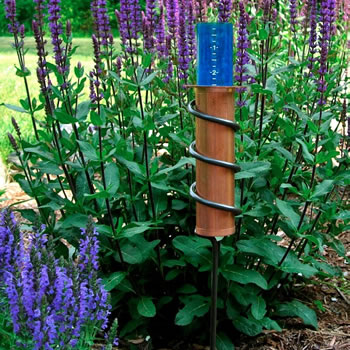I noticed a crack in my plastic rain gauge this morning, the inevitable consequence of freezing with water inside. I did a search an found a recent patent issued to a NY state resident with a solution (maybe). He added a compressible bladder inside the rain gauge so ice can expand without breaking the outer vessel. It seems there might be a durability issue with the materials used. UV sunlight tends to break down plastics. The patent was not assigned to any company so I'll have to wait.
Another approach might be a bi-metalic metal valve that allows water to leak out below near freezing temps. Again not a trivial engineering task to make reliable.
For now I probably need to buy yet another $5 gauge and empty if before hard freezes.
JR
Another approach might be a bi-metalic metal valve that allows water to leak out below near freezing temps. Again not a trivial engineering task to make reliable.
For now I probably need to buy yet another $5 gauge and empty if before hard freezes.
JR





